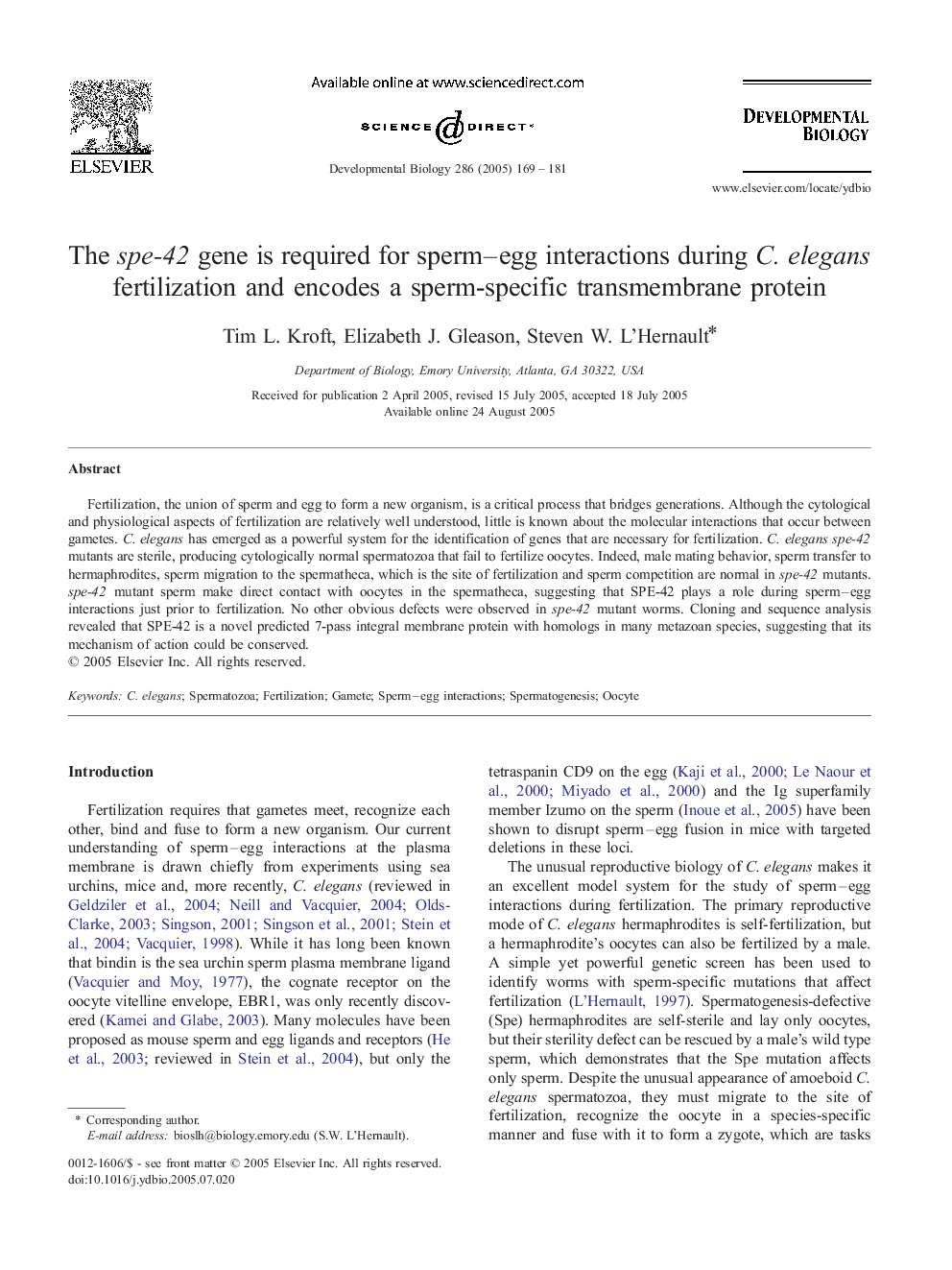| Article ID | Journal | Published Year | Pages | File Type |
|---|---|---|---|---|
| 10934149 | Developmental Biology | 2005 | 13 Pages |
Abstract
Fertilization, the union of sperm and egg to form a new organism, is a critical process that bridges generations. Although the cytological and physiological aspects of fertilization are relatively well understood, little is known about the molecular interactions that occur between gametes. C. elegans has emerged as a powerful system for the identification of genes that are necessary for fertilization. C. elegans spe-42 mutants are sterile, producing cytologically normal spermatozoa that fail to fertilize oocytes. Indeed, male mating behavior, sperm transfer to hermaphrodites, sperm migration to the spermatheca, which is the site of fertilization and sperm competition are normal in spe-42 mutants. spe-42 mutant sperm make direct contact with oocytes in the spermatheca, suggesting that SPE-42 plays a role during sperm-egg interactions just prior to fertilization. No other obvious defects were observed in spe-42 mutant worms. Cloning and sequence analysis revealed that SPE-42 is a novel predicted 7-pass integral membrane protein with homologs in many metazoan species, suggesting that its mechanism of action could be conserved.
Related Topics
Life Sciences
Biochemistry, Genetics and Molecular Biology
Cell Biology
Authors
Tim L. Kroft, Elizabeth J. Gleason, Steven W. L'Hernault,
